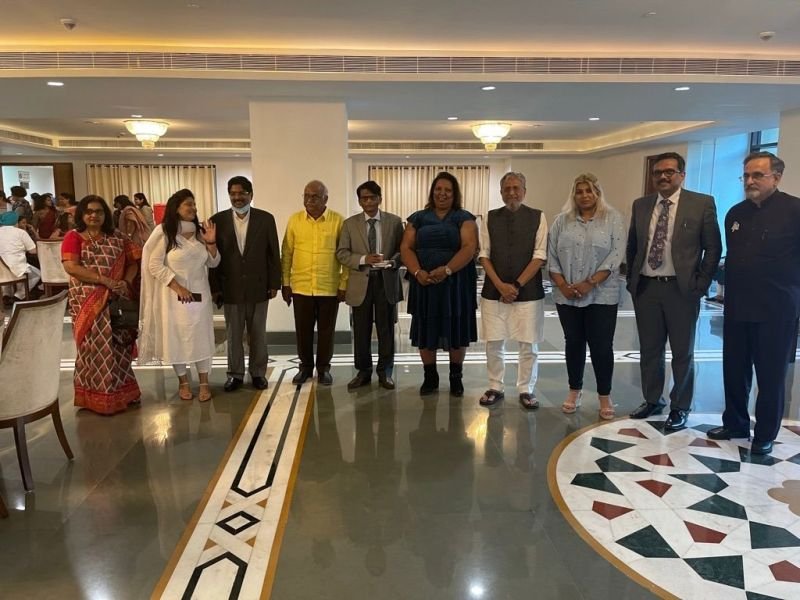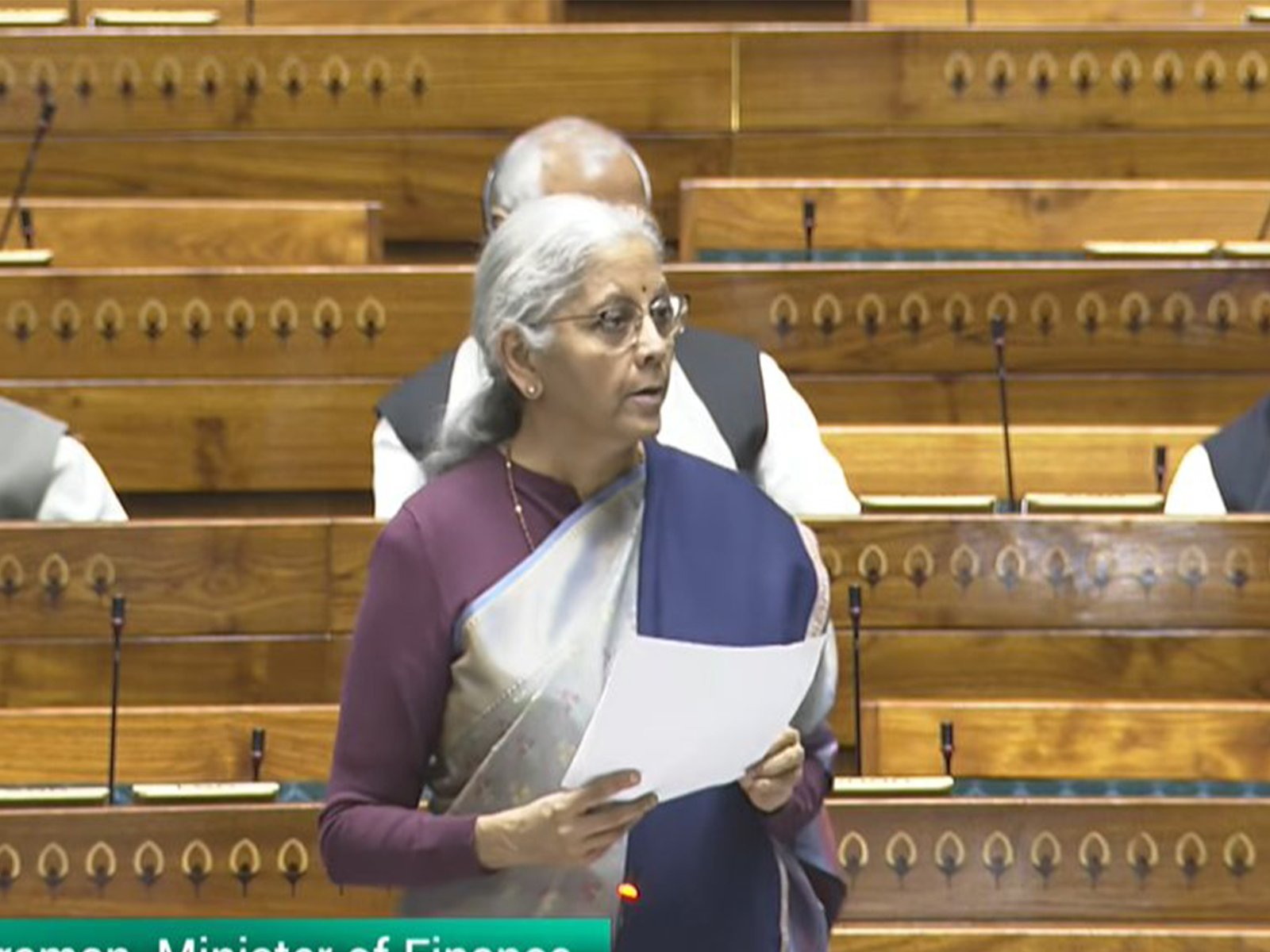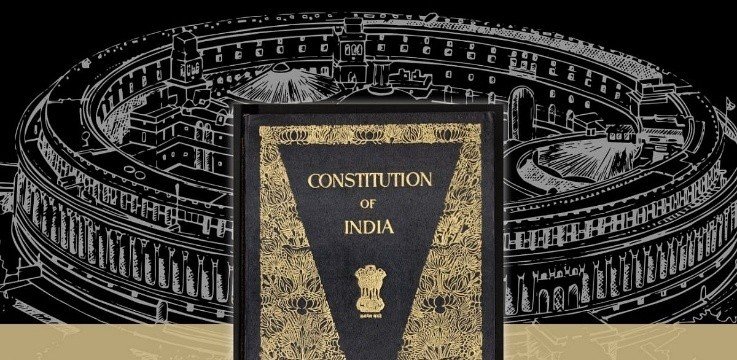Why in the News?
- The Minister of Law and Justice, reaffirmed the government’s commitment to legal reforms rooted in India’s civilisational ethos, highlighting the doctrine of Panch Parmeshwar for collective dispute resolution.
- The India Justice Report 2025 exposed significant challenges in India’s justice delivery system — reigniting focus on Alternative Dispute Resolution (ADR)
- With over 4.5 crore pending cases across courts, ADR is seen as a faster, cost-effective, and inclusive model for justice delivery.
Key Highlights
- Roots of ADR in India’s Civilisational Ethos
- The idea of resolving disputes through consensus and community participation is deeply embedded in India’s cultural and civilisational heritage.
- The doctrine of Panch Parmeshwar, often referred to by the Law Minister, reflects this ancient system — where five respected elders (Panchas) in a village collectively decided disputes based on fairness, truth, and social harmony.
- This system symbolised the principle of collective wisdom and reconciliation, rather than confrontation.
- Modern India draws inspiration from this ethos in shaping Alternative Dispute Resolution (ADR); a mechanism that seeks to deliver justice without the delay and expense of formal court proceedings.
- Constitutional and Legal Foundation of ADR
- Post-Independence, the Constitution of India laid the groundwork for equitable justice through Article 39A, which directs the State to ensure equal justice and free legal aid to all citizens.
- To operationalise this principle, the Code of Civil Procedure, 1908 was amended to include Section 89, which legally recognised 4 main ADR mechanisms i.e., arbitration, conciliation, mediation, and judicial settlement (including Lok Adalat).
- Institutionalisation through the Arbitration and Conciliation Act, 1996 (Amended 2021)
- To further strengthen ADR, the Arbitration and Conciliation Act, 1996 was enacted. The Act was later amended in 2021 to modernise the system and enhance its credibility.
- The amendments introduced several key provisions:
- Establishment of the Indian Arbitration Council to regulate institutional arbitration and promote professional standards.
- A time limit of 180 days for resolving disputes through arbitration to ensure timely justice.
- Encouragement for resolving civil and compoundable offences (like theft or trespass) through mutual settlement.
- This marked a shift from ad hoc arbitration to a structured, transparent, and time-bound ADR framework, aligning with global best practices.
- Lok Adalats: Taking Justice to the Grassroots
- The idea of people’s courts, or Lok Adalats, was institutionalised through the Legal Services Authorities Act, 1987, inspired by Article 39A. These forums enable speedy and cost-free justice, particularly for the poor and marginalised.
- The first Lok Adalat was held in Gujarat in 1999, setting a precedent for community-based justice.
- There are different forms such as Permanent Lok Adalats (for public utility disputes), National Lok Adalats, and e-Lok Adalats, which function digitally.
- Their decisions are final and binding, though parties dissatisfied with the outcome may approach a regular court.
- This innovation ensured that justice was not confined to courtrooms but became accessible at the community level, bridging the gap between people and the law.
- Mediation as a Transformative Tool for Justice
- Mediation; one of the key components of ADR has evolved as a tool for social transformation.
- Former Chief Justice Y. Chandrachud described mediation as a process that aligns social norms with constitutional values.
- Unlike adversarial litigation, mediation encourages dialogue, empathy, and mutual respect.
- It allows parties to resolve disputes in their own language, maintaining relationships and dignity.
- The concept of pre-litigation mediation, where disputes are settled before reaching court, further reduces pendency.
- Mediation’s focus on restorative justice over retribution makes it an essential part of India’s legal reform agenda.
- The Current Crisis: Pendency and Pressure on the Judiciary
- The India Justice Report 2025 and National Judicial Data Grid (NJDG) highlight the scale of India’s judicial pendency crisis:
- Approximately 5 crore cases are pending in courts.
- The Supreme Court alone has around 81,768 cases, and High Courts nearly 62.9 lakh.
- The India Justice Report 2025 and National Judicial Data Grid (NJDG) highlight the scale of India’s judicial pendency crisis:
- High Courts face 33% judicial vacancies, and District Courts around 21%.
- In States like Uttar Pradesh, Himachal Pradesh, and Kerala, judges handle workloads exceeding 4,000 cases per judge.
- Such overwhelming numbers underline why India urgently needs ADR as a parallel track for justice delivery.
- Towards a Global and Inclusive ADR System
- The government envisions a model combining India’s traditional ethos (Panch Parmeshwar) with modern international arbitration standards.
- Efforts are underway to:
- Promote ADR education and training for mediators and arbitrators.
- Expand digital ADR platforms such as e-Lok Adalats.
- Ensure cross-border recognition of arbitral awards and build confidence among global investors.
- This marks India’s transition from a litigation-heavy system to a negotiation-driven justice culture, aligning efficiency with inclusivity.
Challenges and Way Forward
| Challenges | Way Forward |
| 1. Low Public Awareness about ADR mechanisms, especially in rural areas. | Launch nationwide awareness campaigns through Legal Services Authorities and Panchayati Raj institutions. |
| 2. Lack of trained mediators and arbitrators. | Develop certified ADR training programmes under the Indian Arbitration Council. |
| 3. Resistance from traditional legal practitioners. | Encourage integration of ADR into legal education and judicial training. |
| 4. Inconsistent implementation across States. | Establish a uniform national ADR policy and monitoring body for standardisation. |
| 5. Technological and infrastructural gaps. | Expand e-Lok Adalats and online mediation platforms to ensure accessibility. |
Conclusion
ADR represents a paradigm shift from adversarial litigation to participatory justice. Rooted in India’s ancient ethos of collective consensus, it bridges constitutional ideals with modern governance needs. Strengthening ADR not only reduces pendency but also restores faith in justice as a humane, efficient, and inclusive process.
| EnsureIAS Mains Question Q. “Alternative Dispute Resolution (ADR) is not merely a legal mechanism but a reflection of India’s civilisational approach to justice.” Discuss its significance in the context of judicial reforms in India. (250 Words) |
| EnsureIAS Prelims Question Q. With reference to Alternative Dispute Resolution (ADR) in India, consider the following statements: 1. The constitutional basis of ADR is derived from Article 39A of the Constitution. 2. Lok Adalats are governed by the Arbitration and Conciliation Act, 1996. 3. The Arbitration and Conciliation (Amendment) Act, 2021, provides for the establishment of an Indian Arbitration Council. Which of the above statements is/are correct? Answer: B. 1 and 3 only Explanation: Statement 1 is Correct: Article 39A mandates equal justice and free legal aid, forming the constitutional foundation for ADR. Statement 2 is Incorrect: Lok Adalats are governed by the Legal Services Authorities Act, 1987, not the Arbitration and Conciliation Act. Statement 3 is Correct: The Arbitration and Conciliation (Amendment) Act, 2021 provides for the Indian Arbitration Council. |
Also Read | |
| UPSC Foundation Course | UPSC Daily Current Affairs |
| UPSC Monthly Magazine | CSAT Foundation Course |
| Free MCQs for UPSC Prelims | UPSC Test Series |
| ENSURE IAS NOTES | Our Booklist |





